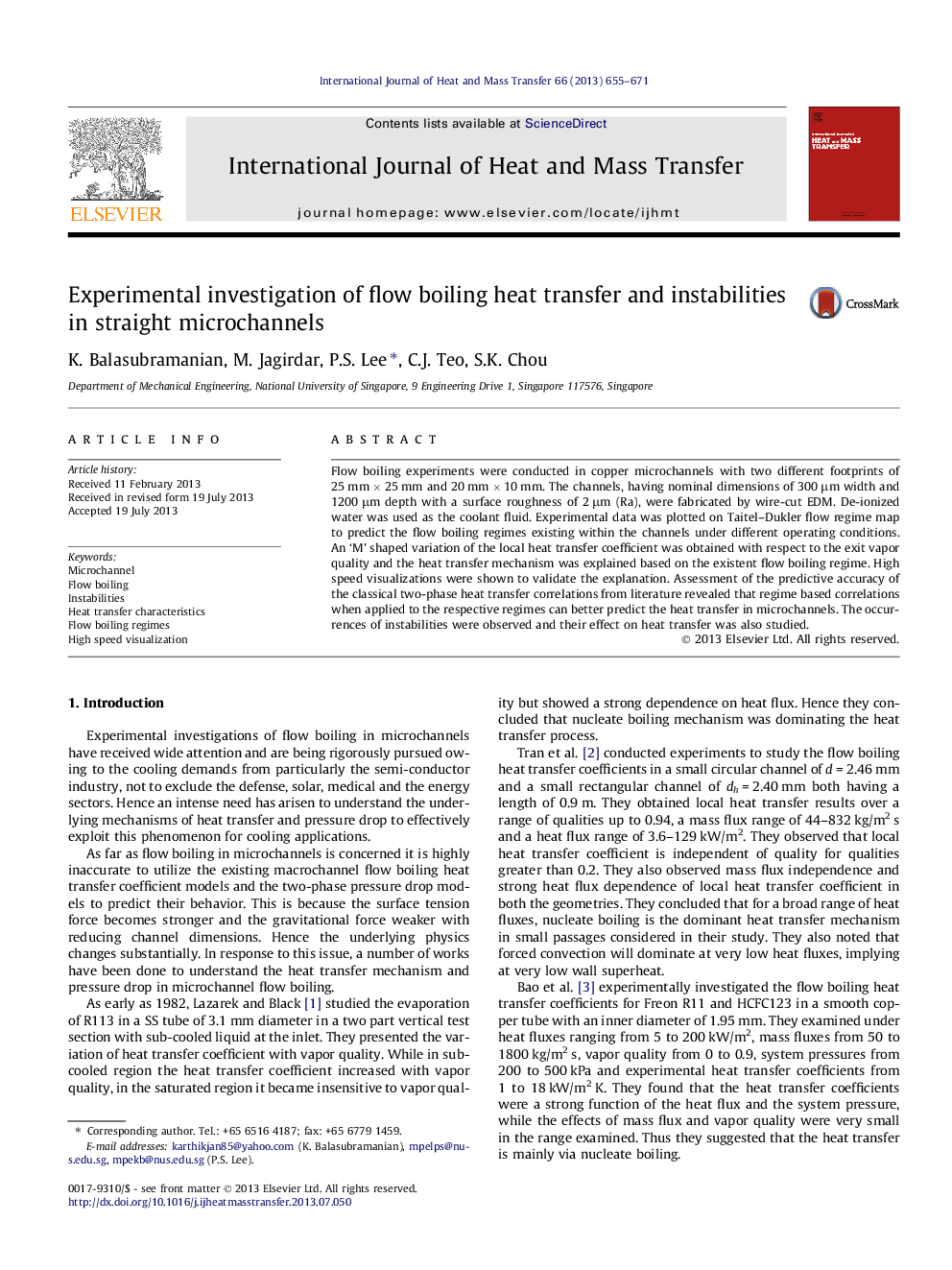| Article ID | Journal | Published Year | Pages | File Type |
|---|---|---|---|---|
| 7058155 | International Journal of Heat and Mass Transfer | 2013 | 17 Pages |
Abstract
Flow boiling experiments were conducted in copper microchannels with two different footprints of 25 mm Ã 25 mm and 20 mm Ã 10 mm. The channels, having nominal dimensions of 300 μm width and 1200 μm depth with a surface roughness of 2 μm (Ra), were fabricated by wire-cut EDM. De-ionized water was used as the coolant fluid. Experimental data was plotted on Taitel-Dukler flow regime map to predict the flow boiling regimes existing within the channels under different operating conditions. An 'M' shaped variation of the local heat transfer coefficient was obtained with respect to the exit vapor quality and the heat transfer mechanism was explained based on the existent flow boiling regime. High speed visualizations were shown to validate the explanation. Assessment of the predictive accuracy of the classical two-phase heat transfer correlations from literature revealed that regime based correlations when applied to the respective regimes can better predict the heat transfer in microchannels. The occurrences of instabilities were observed and their effect on heat transfer was also studied.
Related Topics
Physical Sciences and Engineering
Chemical Engineering
Fluid Flow and Transfer Processes
Authors
K. Balasubramanian, M. Jagirdar, P.S. Lee, C.J. Teo, S.K. Chou,
